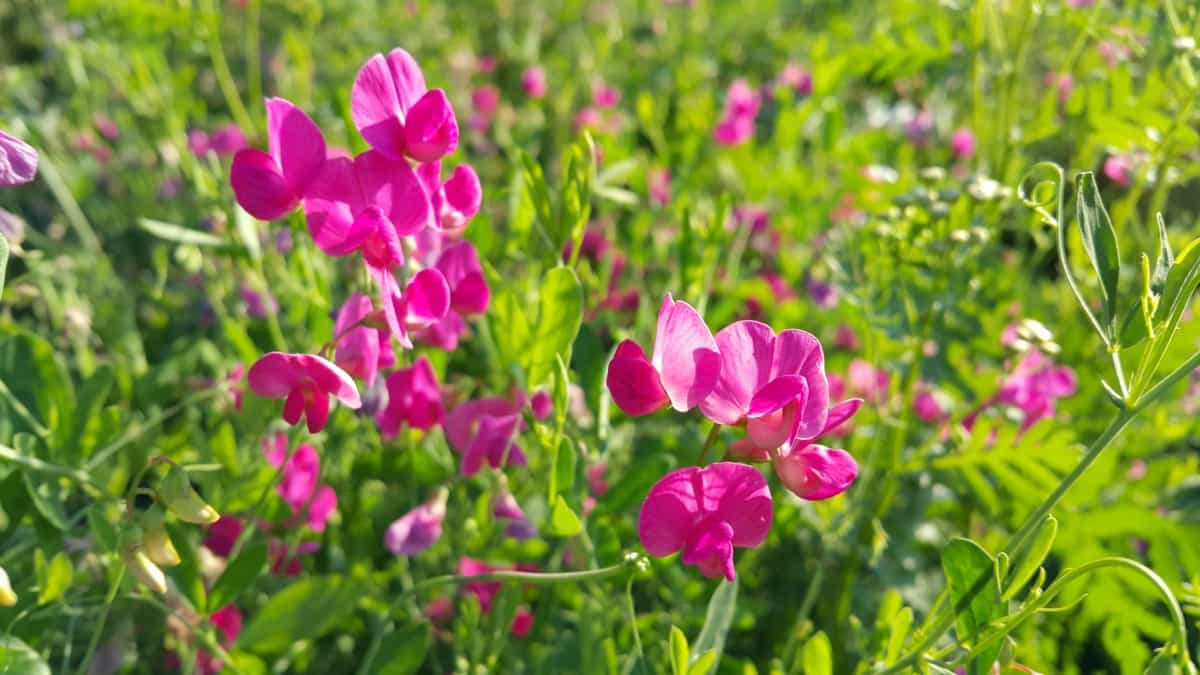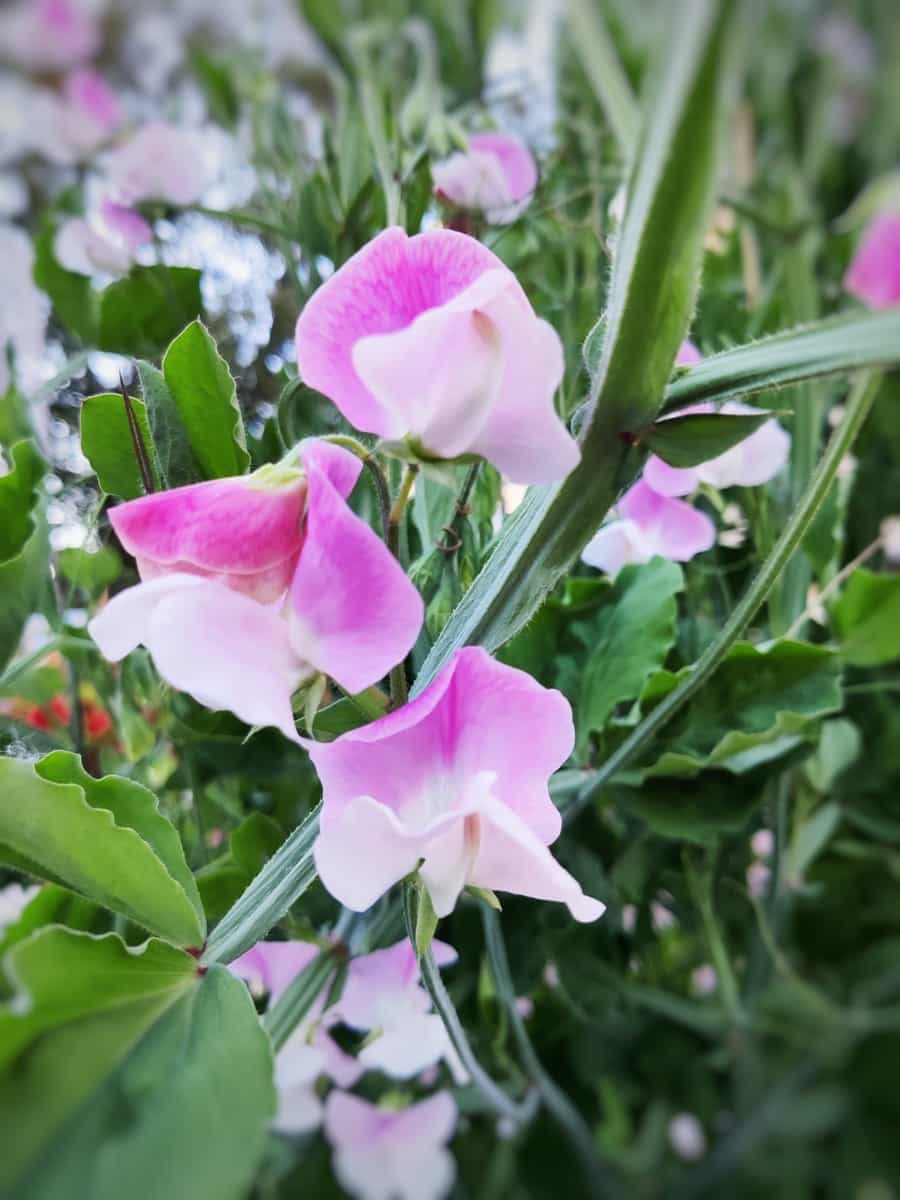Whether you’re a seasoned gardener or just beginning your horticultural journey, sweet peas are an excellent addition to your green space. They make a charming and rewarding crop with their delightful colors, intriguing shapes, and intoxicating fragrance. One may wonder, “Do sweet peas come back every year?” Though not always perennial in every climate, sweet peas are typically grown annually.

Some gardeners have experienced success in overwintering them, particularly in milder climates. Sweet peas are frost-tolerant and can even overwinter, allowing you to enjoy their beauty season after season with the right care.
How to Grow and Care for Sweet Pea Flowers
Step-by-step Instructions for Growing Sweet Peas
Growing sweet peas from seed is a rewarding and economical way to fill your garden with these lovely blooms. The ideal time to plant sweet peas is in the spring. But is it too late to plant sweet peas if you’ve missed the early spring window? No, sweet peas are quite hardy and can be planted in the ground if the soil is not frozen. Here are the steps for planting:
- Opt for a spot that receives abundant sunlight or partial shade. Sweet peas can handle some warmth but thrive better in cooler environments.
- To improve fertility and drainage, prepare the soil by removing weeds and rocks, then work in compost or well-rotted manure.
- Plant the seeds directly in the soil, placing them around 1 inch deep and 2 to 3 inches apart.
To grow sweet peas in pots, a favored method is to begin indoors approximately six weeks prior to the final frost date. This method allows for a longer blooming period and better control over growing conditions.
Best Soil and Fertilizer for Sweet Pea Growth
Sweet peas thrive in fertile, well-draining soil with a pH level between 6.0 and 7.0. Using organic materials such as compost or aged manure boosts soil nutrients and improves its quality, aiding the growth of sweet peas. As for fertilizing, a balanced granular fertilizer applied at planting time will support healthy growth. Once the plants start flowering, switch to a high-potash liquid feed to encourage prolific blooms.
Ideal Temperature and Sunlight Requirements for Sweet Peas
Sweet peas prefer cooler conditions and can tolerate a bit of shade. However, they need a good amount of sunlight each day for the best flowering. Sweet peas thrive in temperatures ranging from 55 to 65 degrees Fahrenheit. However, they can withstand temperatures up to 75 degrees if provided with sufficient water and mulching to maintain cool root conditions.
Proper Watering Techniques for Sweet Pea Plants
Sweet peas require consistent watering to keep their soil moist but not waterlogged. Excessive watering can cause root rot; insufficient watering can make plants wither. Watering at the base of the plant, rather than from above, helps to keep the foliage dry and prevent disease. During hot, dry periods, sweet peas may require watering every day.
How to Provide Support for Sweet Pea Vines
Sweet peas are climbing plants and require support to grow properly. Plant them near a fence, trellis, or netting, or provide stakes or bamboo canes for them to clamber up. The tendrils of sweet peas will naturally twine around these supports, helping the plant grow upwards and produce abundant flowers.
In case you missed it: How to Grow and Care for Ranunculus: Planting Instructions for Best Blooms

Sweet Pea Pruning and Deadheading Techniques
Pruning and deadheading are vital parts of sweet pea care. After planting your sweet pea seedlings, pinch out the tops when they are about 6 inches tall to encourage bushier growth. Continue pinching back as needed throughout the growing season.
Once your sweet peas begin to bloom, regular deadheading, and removing the spent flowers will encourage more blooms. It’s important to note what to do with sweet peas when they finish flowering. If you leave the flowers on the plant, they will form seed pods, and the plant will stop producing new blooms. Regular deadheading encourages the plant to keep flowering for as long as possible.
Overwintering Sweet Pea Plants for Continued Growth
While sweet peas are typically grown as annuals, they can sometimes be overwintered for a burst of early spring color. To overwinter sweet peas, cut back the vines in late autumn but leave the roots in the ground. Mulch heavily with straw or compost to protect the roots from freezing temperatures. With this approach, you might just find your sweet peas sprouting back the following spring.
Harvesting and Preserving Sweet Pea Flowers
When harvesting sweet peas, the more you pick, the more flowers the plant will produce. To maximize vase life, select flowers during the cool morning hours while the dew is present on the petals. Snip the stems at the base and immediately place them in a bucket of water to keep them fresh. If you’d like to preserve your sweet peas for future enjoyment, you can dry them. Simply hang the flowers upside down in a cool, dry place until they’re completely dry, then store them in a sealed container.
Understanding Sweet Pea Varieties
There’s a wide variety of sweet peas, and selecting the right ones for your garden is another crucial step. There are heirloom varieties known for their intense fragrance and traditional charm, as well as modern hybrids that boast diverse colors and longer, sturdier stems. Some varieties are particularly well-suited for container gardening, making them ideal for those growing sweet peas in pots. Research different types and select the ones that match your aesthetic preferences and the specific conditions of your garden to ensure a successful and enjoyable growing experience.
Sweet Pea Pest and Disease Prevention Tips
Sweet peas are usually robust, yet they can suffer from typical garden pests like aphids and slugs. To avoid substantial harm, regularly check and promptly address these pests. Utilize organic pest control techniques, such as introducing helpful insects or using slug traps, to keep your garden healthy. Fungal diseases can also affect sweet peas, particularly in damp conditions. To prevent this, ensure your plants have adequate ventilation and avoid watering the foliage directly. Rotate your sweet pea crops each year to prevent disease buildup in the soil.
In case you missed it: 9 Reasons Why Your Tomatoes Aren’t Ripening: Treatment and Solutions

Conclusion
Sweet peas are a joy to grow, bringing a splash of color and elegance to any garden. With their vibrant hues, intricate shapes, and heavenly scent, they truly delight the senses. Following these guidelines, you can enjoy a bounty of sweet peas throughout the growing season.
- Ultimate Guide to Ossabaw Island Hog: Breeding, Raising, Diet, and Care
- Ultimate Guide to Juliana Pig: Raising Facts, Size, Diet, Care, and Lifespan
- Raising Lleyn Sheep: Disadvantages, Price, Uses, Characteristics, and Care
- Ultimate Guide to Meishan Pig: Breed Facts, Breeding, Raising, and Care
- Ultimate Guide to Teacup Pigs: Raising, Diet, Lifespan, Cost, and Care
- Guide to Raising Poll Dorset Sheep: Facts, Profile, Characteristics, Uses, and Care
- Ultimate Guide to Bighorn Sheep: Characteristics, Diet, Lifespan, Breeding, and Lifecycle
- Ultimate Guide to Raising Katahdin Sheep: Farming Facts, Breed Profile, Uses, and Care
- Ultimate Guide to Raising Oreo Cows: Belted Galloways Farming Facts, Profile, Uses, and Care